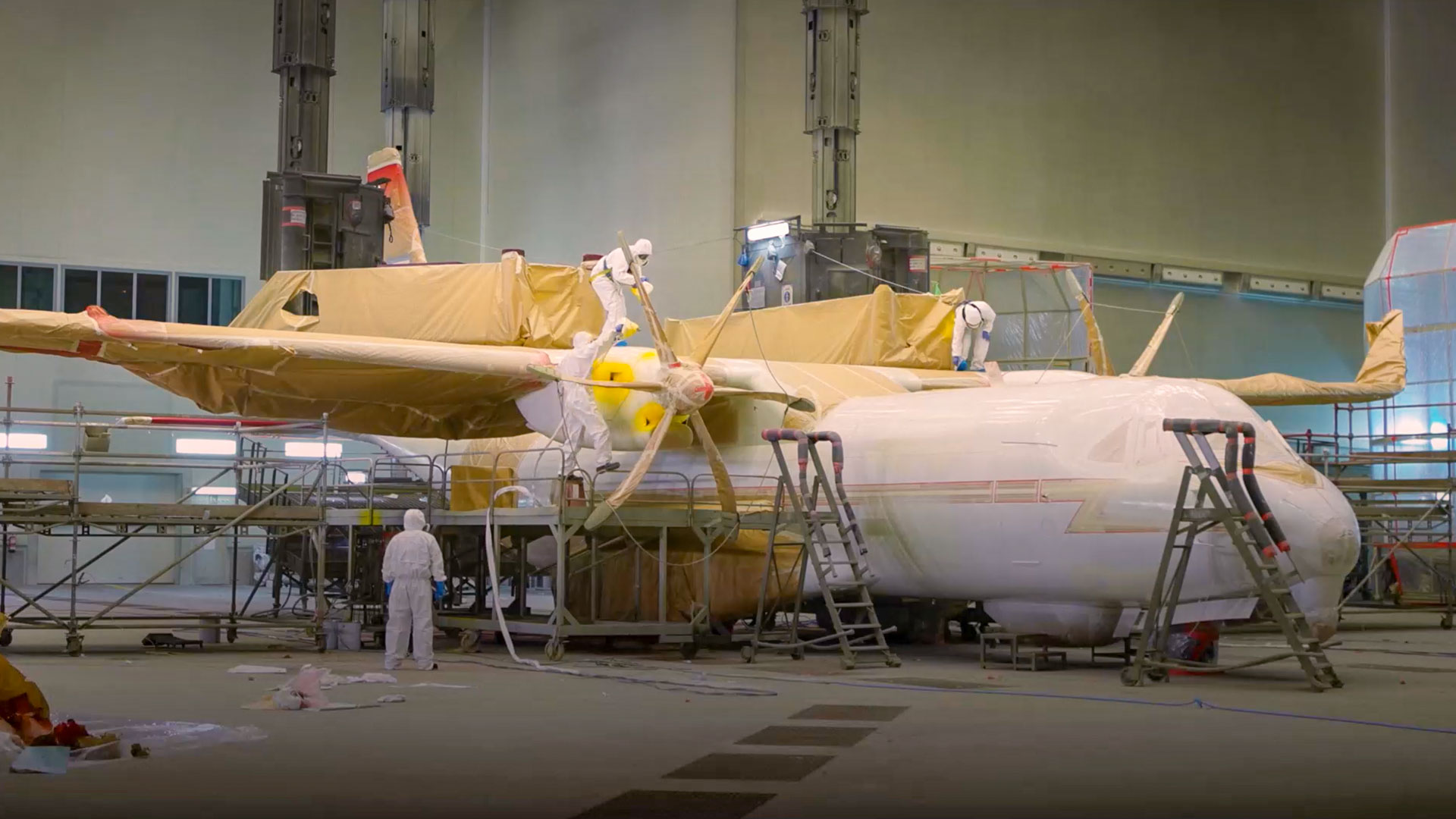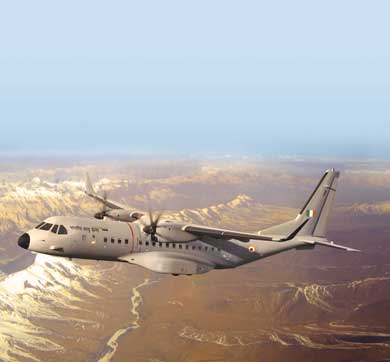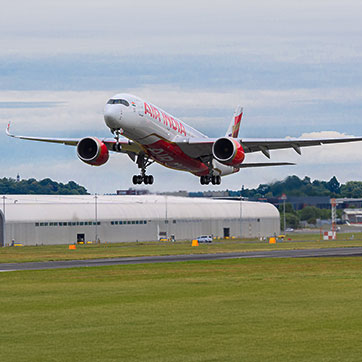February 2025 | 1637 words | 6-minute read
The charter to indigenise defence industrial production as well as technological research is not new. India’s ordnance factories and organisations such as the Defence Research and Development Organisation (DRDO) have been at the forefront of this. But there has been a new dynamism and energy in recent years with the government involving private players under the Make in India initiative.
Tata Advanced Systems has emerged as a key player, offering a range of integrated solutions across its four divisions — Aerostructures and Aero-engines, Airborne Platforms and Systems, Defence and Security, and Land Mobility. Its ability to execute complex projects, develop indigenous technologies and integrate into global supply chains have made it a reliable partner for the Indian defence forces and global players in the defence and aerospace sectors.
The vision
That the Tata group has consistently espoused the cause of the nation — from the Founder Jamsetji Tata’s earliest initiatives — is well known. The group’s entry into the aerospace and defence sector is in line with this vision: a sense of duty towards the nation, to indigenise, gain technological expertise, build a manufacturing base and earn critical export revenue by becoming part of the global ecosystem — in a very complex industry, while at the same time, generating jobs and creating wealth.
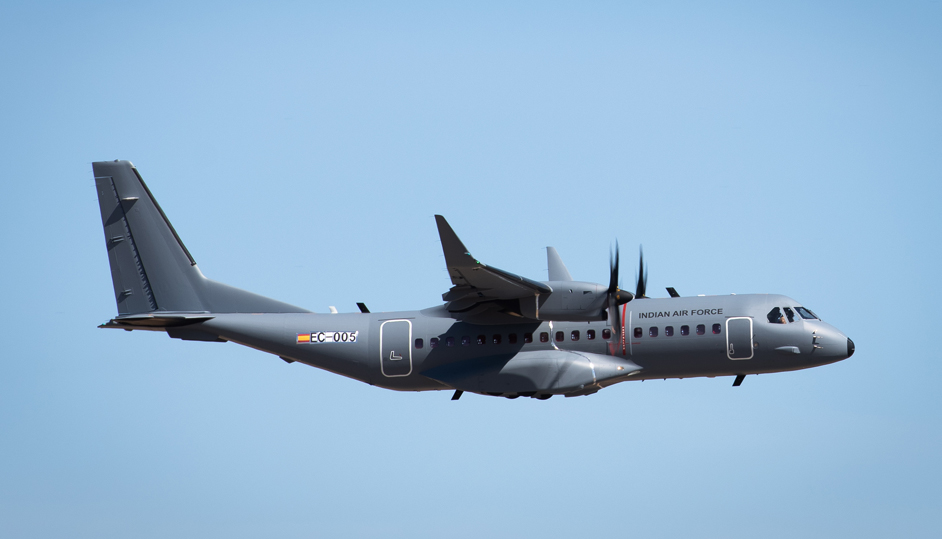
Sukaran Singh, the company’s Chief Executive Officer and Managing Director, credits this to the vision and determination of Ratan N Tata, the then Chairman of Tata Sons. “Mr Tata was instrumental in bringing in his relationships, building credibility and urging us to develop new technology,” says Mr Singh. “And he reposed faith in our team to deliver, which we did.”
"Mr Ratan Tata was instrumental in bringing in his relationships, building credibility and urging us to develop new technology, and he reposed faith in our team to deliver, which we did" - Sukaran Singh, CEO and Managing Director
Within two years of incorporation, the company signed a deal with Sikorsky Aircraft, now a subsidiary of Lockheed Martin, to manufacture aerospace components in India, followed by a long-term contract to assemble their S-92 commercial helicopter cabins. The contract to manufacture parts for Lockheed Martin’s C-130J Super Hercules came soon after.
In 2018, as part of Tata Sons Chairman N Chandrasekaran’s 3S strategy — Simplify, Synergise, and Scale — the group consolidated its aerospace and defence businesses. This brought entities such as Tata Power SED, TAL Manufacturing, Tata Advanced Materials and the defence division of Tata Motors into Tata Advanced Systems’ fold.
Reflecting on this milestone, Mr Singh says, “The integration of Tata’s aerospace and defence companies reflects the foresight and strategic vision of our current Chairman. His support and decisive leadership have been instrumental in transforming TASL’s spread of business and growth aspirations.”
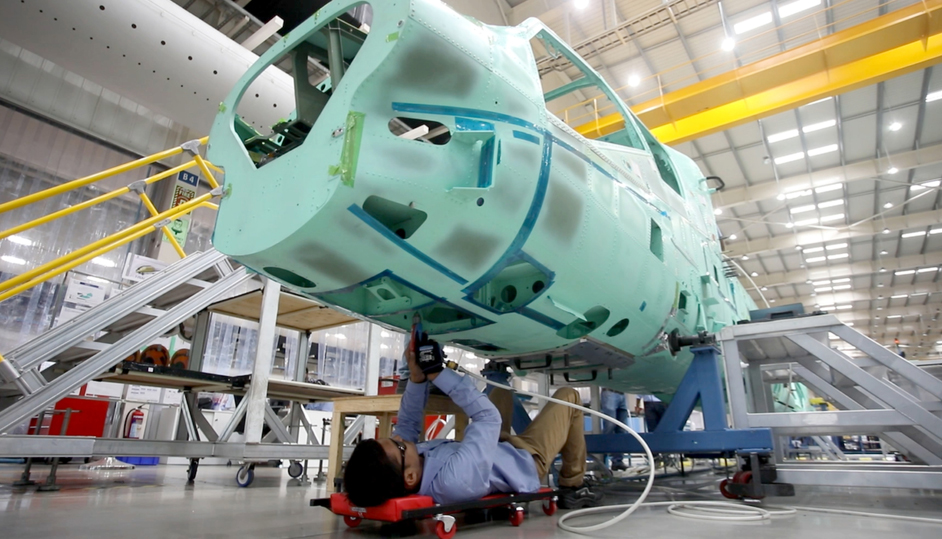
Three-pronged strategy
Developing a business in an industry dominated by unpredictable geopolitical forces requires aggressive capital expenditure and investments in diverse technologies. Tata Advanced Systems’ ‘portfolio + platform’ strategy is a game-changer, enabling it to minimise uncertainty and maximise utilisation of capital assets, while tapping into its immense engineering talent.
The strategy involves three distinct business models. The first, says Mr Singh, is “the work for global aerospace and defence companies, where we make parts of their product in India, at a very high quality and a lower cost than they would have done elsewhere in the world and exported.” The second is the building of large platforms in India where the intellectual property (IP) is owned by foreign companies, and the third is the development of its own IP to build platforms in areas where foreign technology is denied or otherwise restricted to India.
Aerostructures and aero-engines
Tata Advanced Systems’ first foray, its Aerostructures and Aero-engines division, has grown into a leader that delivers world-class aerospace components, specialising in advanced manufacturing, assembly and precision engineering for global OEMs. Its diverse capabilities, competencies and programme requirements have been channelled into four Centres of Excellence in metallics, composites, assemblies and aero-engines.
Its joint venture with Boeing produces fuselages for the Apache AH-64 combat helicopter and critical components for the Chinook CH 47 helicopter, marking India’s entry into complex aerospace manufacturing. The company now exports to Boeing’s global supply chain, attesting to Indian manufacturing capabilities.

Tata Advanced Systems’ long-standing partnership with Lockheed Martin has seen it become the single source provider of empennages for the C-130J Super Hercules military transport aircraft. It also manufactures critical parts of the much-storied Lockheed Martin F-16.
Tejas, the indigenous light combat aircraft by Hindustan Aeronautics, also has several components jointly developed and manufactured by Tata Advanced Systems, as does the Pilatus PC-12 NG aircraft.
Airborne platforms and systems
This division undertakes work that incorporates the company’s second and third business models. Tata Advanced Systems’ second business model, the full platform model that uses foreign IP, is best illustrated by the Tata Aircraft Complex in Gujarat, which will manufacture the Airbus C295 transport aircraft. Inaugurated in 2024, the complex will deliver 40 ready-to-fly C295s to the Indian Air Force (IAF). The first Made in India C295 aircraft will roll out in 2026 and the last by 2031.
“The project will propel India into the next generation of advanced manufacturing. It will build a diverse and sophisticated skills ecosystem as well as a very strong supplier base and, more importantly, give a lot of high-tech opportunities for our entrepreneurs and youth.” - N Chandrasekaran, Chairman, Tata Sons
“The project will propel India into the next generation of advanced manufacturing,” said Mr Chandrasekaran during the inauguration ceremony. “It will build a diverse and sophisticated skills ecosystem as well as a very strong supplier base and, more importantly, give a lot of high-tech opportunities for our entrepreneurs and youth.”
The development positions Tata Advanced Systems in yet another crucial segment of aerospace manufacturing and is significant on many levels. Not only does it fulfil a critical IAF need, but it is the first example of a private sector final assembly line (FAL) for a military aircraft in India and the first time Airbus has established an aircraft’s entire production system outside its home nations.
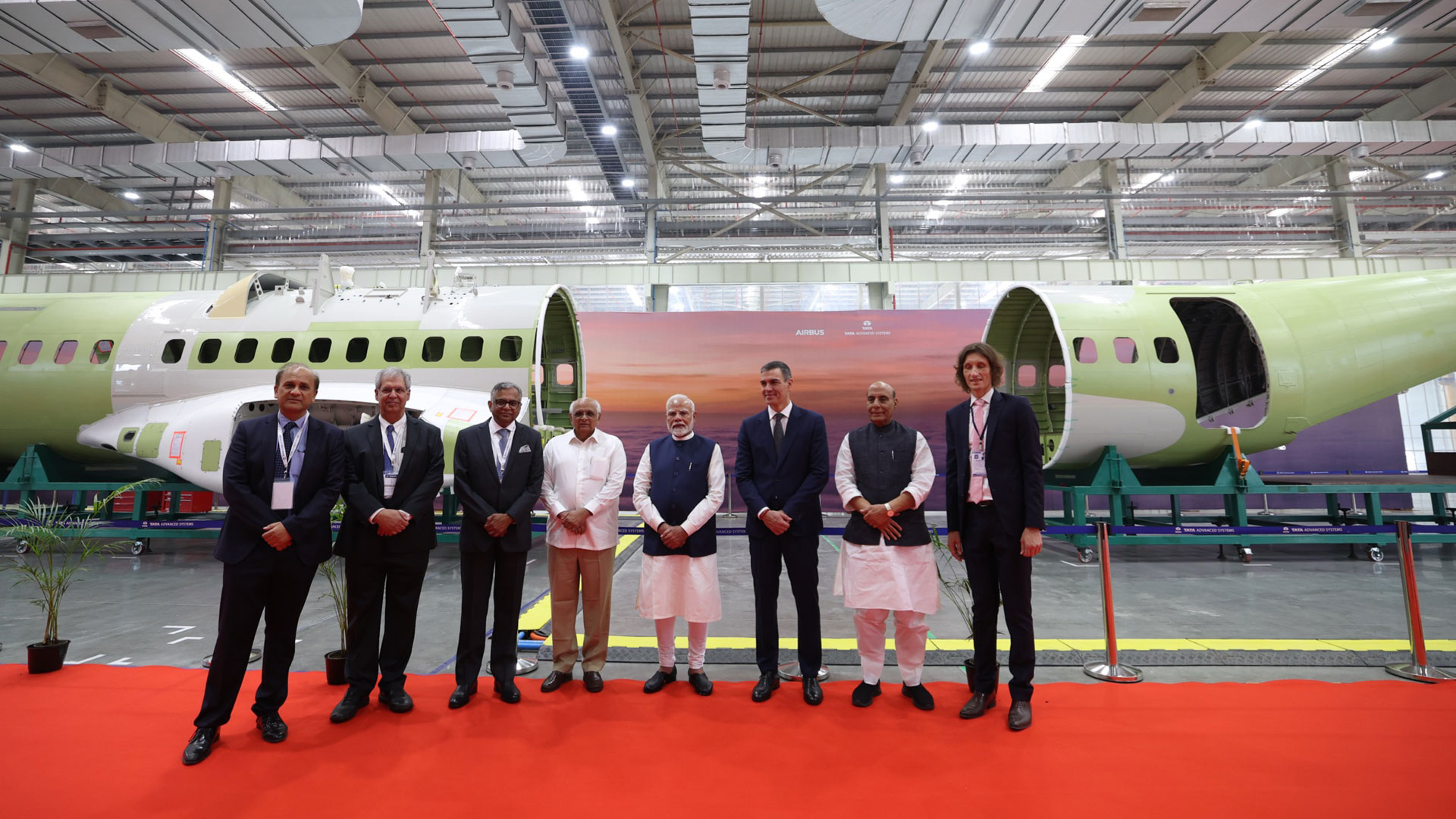
In 2024, in partnership with Lockheed Martin, Tata Advanced Systems also expanded to include the establishment of a maintenance, repair and overhaul (MRO) facility for defence aircraft in India, initially to support the IAF’s C-130Js. “This is a significant milestone as it marks the entry of Tata Advanced Systems into the defence MRO space in India for large aircraft platforms,” says Mr Singh.
At the 2024 Farnborough International Airshow, the company announced an important development — it is setting up a FAL for Airbus’ bestselling H125 civilian helicopter. This is the first private sector helicopter manufacturing facility in India.
Tata Advanced Systems’ entry into space tech in 2024 was also noteworthy, with the successful launch of TSAT-1A, a Low Earth Orbit (LEO) remote sensing satellite. The assembly, integration and testing of the satellite was done by the company in India with training from a foreign satellite company.
As part of its third business model, Tata Advanced Systems builds platforms via its own IP or partners to develop and manufacture systems. The company combines capital expenditure with built-in flexibility, ensuring it can swiftly respond to market shifts. “Simply put, platform means that we are thinking about a capital spend and a management time spend; that if we do X, then we can hit other additional markets by just doing X plus delta,” says Mr Singh. “This enables us to have a less uncertain approach to the aerospace and defence world. This industry is very distinct as requirements change, environments are different and gaining strategic advantage is key for defence forces.”
"Platform enables us to have a less uncertain approach to the aerospace and defence world. This industry is very distinct as requirements change, environments are different and gaining strategic advantage is key for defence forces.” - Sukaran Singh
One of the outcomes of this model is developing cutting-edge unmanned platforms, of which the loitering munition — ALS-50, a vertical take-off and landing unmanned aerial munition system — is a key product developed entirely by the company’s engineers. In 2023, 100 units were delivered to the IAF, giving it the ability to strike targets remotely with precision and autonomously via vision.
Defence and Land Mobility
In this division, also a part of the third model, the company is building a diverse portfolio of innovative products and services. “We have developed five to six full platforms under this model, where we are developing our own IP or doing so jointly,” says Mr Singh. “Here, in Defence Systems and Land Mobility Systems, and just like in our Unmanned Systems, we control the design and everything; and if we want to build something that is a bigger system, we can do so without going to anyone abroad. That control is what Indian customers are really looking for. It gives the Indian armed forces a critical strategic advantage.”
The indigenous Advanced Towed Artillery Gun System (ATAGS) is a landmark product under this model. Developed jointly with DRDO, the system incorporates futuristic technologies in electrical, electronics, mechanical design and analysis.
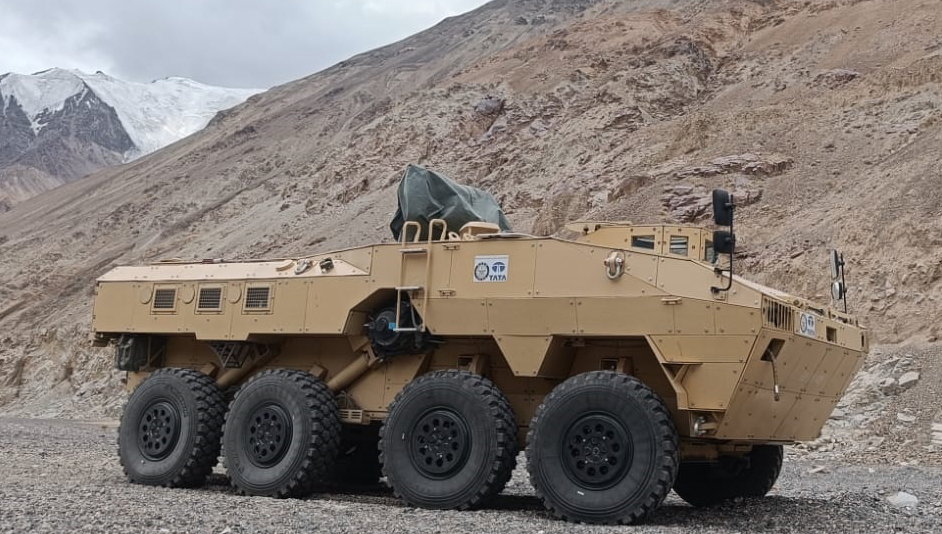
Tata Advanced Systems’ flagship amphibious vehicle, WhAP (Wheeled Armoured Platform), also designed jointly with DRDO, is India’s first amphibious infantry combat vehicle (wheeled), delivering optimised survivability and all-terrain performance. In September 2024, the company landed one of India’s largest global defence deals — the Royal Moroccan Armed Forces purchased 150 units of the 8x8 WhAP. The collaboration strengthens India’s role in African defence and offers new opportunities for defence technology exchange.
For the nation
For even the most casual observer, the world is entering an uncertain phase where geopolitical shifts impact economies at every level and shape the lives and destinies of citizens. Tata Advanced Systems sees itself as a critical partner, helping India steer through challenging times.
"We build systems that need to work in complex environments, and as the Tata group, we give the confidence to sensitive customers that we will always be there to support.” - Sukaran Singh
“India requires high tech enterprises — builders and solution providers — that can mitigate the country’s risk and help it secure itself,” says Mr Singh. “All of that is very important. We must also look at how technology is used to further the interests of our country, not only in India but also in the world via exports to select countries. We build systems that need to work in complex environments, and as the Tata group, we give the confidence to sensitive customers that we will always be there to support.”
After all, what is good for India is good for Tata.
- Haroon Bijli




